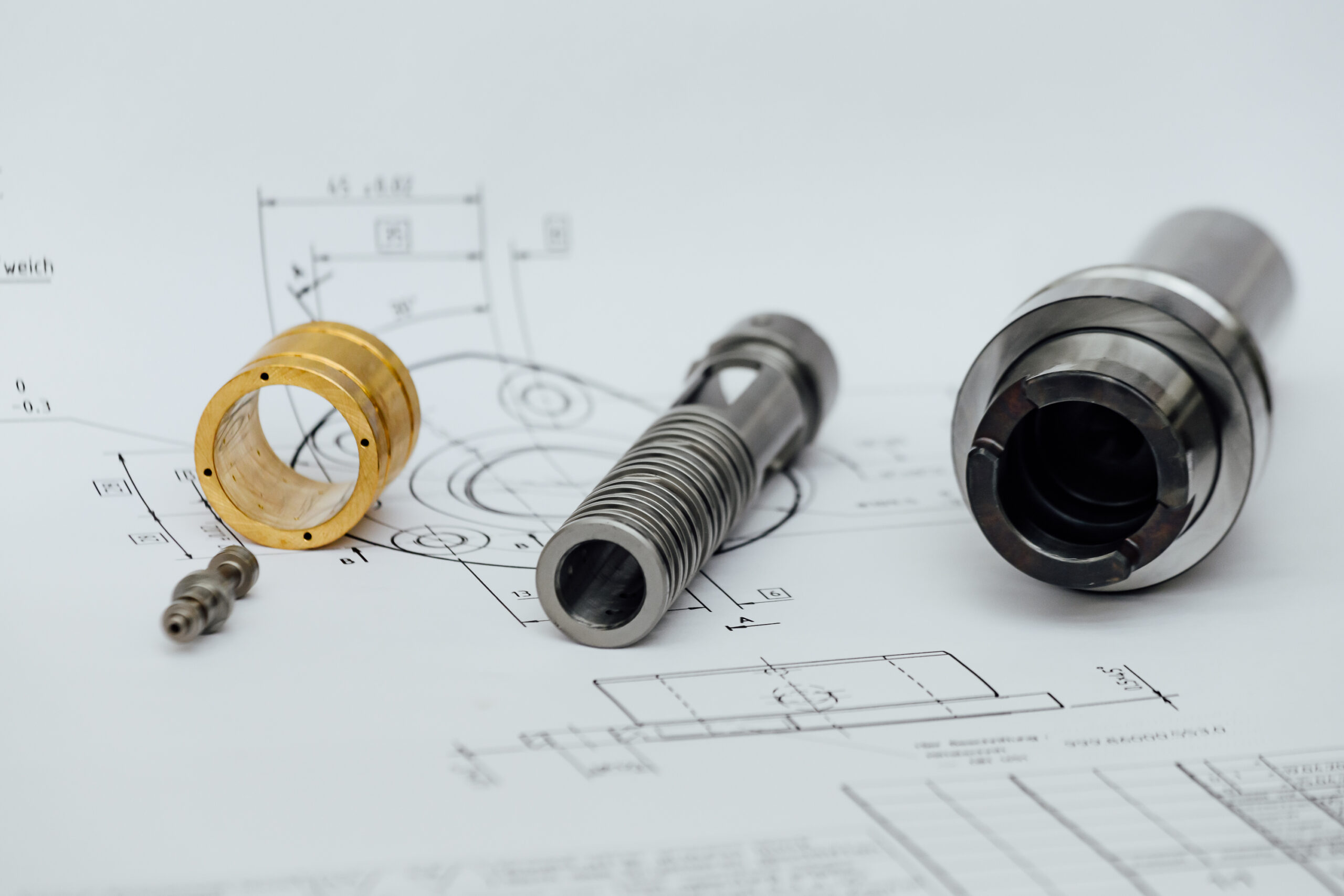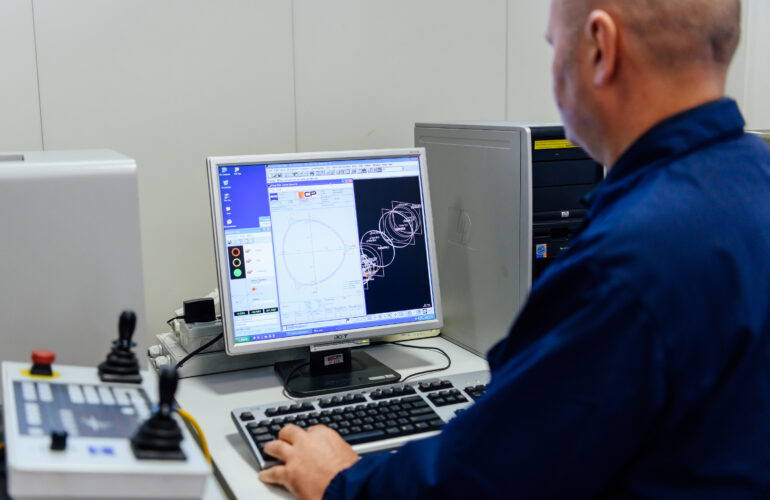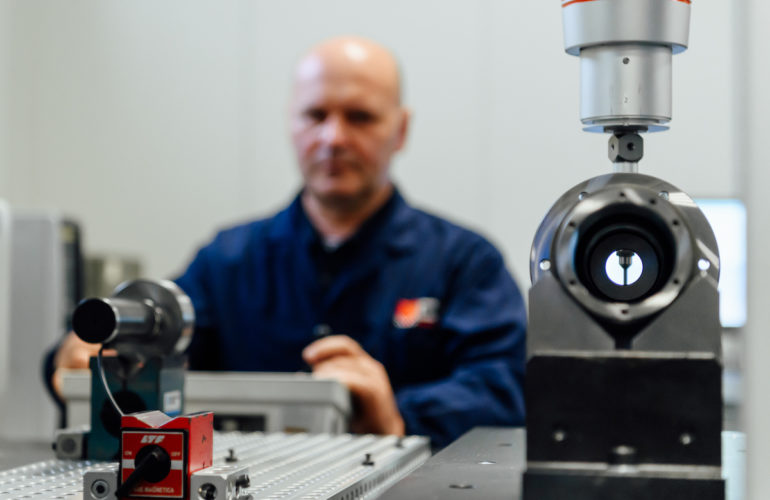Threading is a fundamental process in precision mechanics that involves creating helical grooves on a surface, known as threads. These threads allow for the connection of mechanical parts using screws or bolts, creating a secure and stable grip. In precision mechanics, threading is crucial to ensure the accurate assembly of components and systems.
Threading in general
Threading involves the creation of helical grooves on a material, resulting in a rough surface called a thread. These threads can be crafted manually or by using specialized machinery. The process entails the precise removal of excess material to achieve a uniform threaded profile.
Threads can be classified into two main categories: external threads and internal threads. External threads are located on the outer part of a component, like a screw, while internal threads are within a hole, such as the thread in a nut.
Types of threading
In the field of precision mechanics, there are several types of threading used based on the application’s requirements. Some of the most common threading types include:
- Metric threading: this is the most widely used threading system and is based on the metric system. Metric threads are characterized by a constant pitch and standard profile angles. They are commonly used in europe and in many parts of the world.
- Unf/unc threading: these are the standard threading types in the united states. Unified national fine (unf) threading has a finer pitch, while unified national coarse (unc) threading has a coarser pitch. They are widely used in sectors like the automotive and aerospace industries.
- Whitworth threading: this is an older form of threading developed in the united kingdom. While less common today, it is still present in some historical or specialized applications.
- Acme threading: this threading has a trapezoidal profile and is often used in linear motion transmission applications.
- Fine-pitch threading: this type is used when greater precision or a tighter grip is required. Fine-pitch threads allow for a tighter fastening but require more turns to be fully tightened.
- Variable-pitch threading: these threads have a pitch that varies along the length of the thread. They are used for special applications where a combination of assembly speed and strength is required.
Applications of threading in precision mechanics
Threading is used in a wide range of applications in precision mechanics. Some examples include:
- Component assembly: threading allows for the secure and precise assembly of mechanical components. For instance, a threaded screw into a hole can hold parts together robustly.
- Adjustment and alignment: threads are often used to adjust the height or inclination of mechanical components, allowing for accurate alignment.
- Motion transmission: threads can be used to transmit rotational motion into linear motion, such as in ball screws.
- Secure fastening: threads provide a secure fastening between two pieces, preventing unintended disconnection.
Advantages of precision threading
Precision threading in the realm of precision mechanics offers a range of advantages, all of which contribute to the reliability and functionality of mechanical systems:
- Accurate assembly: precision threading ensures that threaded components fit together perfectly, minimizing gaps and potential misalignments. This is crucial in applications where tight tolerances are essential.
- Reduced wear: properly threaded components experience less wear and tear due to reduced friction. This is especially important in applications involving constant movement or frequent adjustments.
- Consistent performance: precision threading leads to consistent performance over time. Well-threaded components maintain their functionality and structural integrity, contributing to the overall reliability of a mechanical system.
- Efficient power transmission: threaded connections are often used in power transmission mechanisms, such as lead screws and ball screws. Precision threading ensures efficient power transfer and minimizes energy loss.
Challenges and considerations
While precision threading offers numerous benefits, it also comes with challenges that must be carefully addressed:
- Dimensional accuracy: achieving the desired dimensional accuracy in threading requires meticulous attention to detail. Even a minor deviation can lead to improper fit and compromised functionality.
- Tool wear: threading tools can experience wear over time, leading to changes in thread quality. Regular tool maintenance and replacement are necessary to ensure consistent results.
- Thread angle and pitch: the thread angle and pitch must be precisely determined and maintained to ensure proper engagement between threaded components.
- Material compatibility: different materials can have varying degrees of hardness and machinability, affecting the threading process. Material selection should consider both threading requirements and component functionality.
Conclusion
In precision mechanics, threading is a fundamental process that underpins the assembly, alignment, and functionality of mechanical components. From metric threading to fine-pitch threading, each type of threading serves a specific purpose, contributing to reliable and secure connections.
Achieving precision in threading demands attention to detail, accurate tooling, and careful consideration of material properties. By mastering the art of precision threading, the field of precision mechanics ensures the creation of robust and dependable mechanical systems that power various industries and applications.




